Take the Good with the Bad
So here we are on a rainy Sunday in New York City. The decorated vase of daisies sits atop a patterned table cloth and next to a painted dish. The rich tapestry of patterns and colors, the energy, celebrated in Alfred S. Mira’s city scenes of Greenwich Village and New York City are present in this work. But does anybody care? When the art market is the last and final stop, the arbiter of good taste and value, the answer is an unequivocal NO.
But when you’re buying art for art’s sake, well then that’s another story. Truth be told, I bought this specifically for the frame. I paid little attention to the painting. But on the train ride home (see last pics for what I mean) I took a closer look. A closer look at the brushstrokes, the palette, the delicacy and subtlety, the expression of the moment. And then it struck me. To talk the talk, we must also walk the walk. We must not pick and choose the select moments, the select scenes, and weave them into what we claim to be as a complete understanding. How can we appreciate the work of an artist like Mira by completely disregarding other facets of his life, his work, his moments? Does a still life of flowers have less value than a ‘still life’ of a street?
Perhaps we can all learn a little by appreciating all of the parts of the whole. For it is only when we know the whole history that we can understand it, learn from it and grow. Ya gotta take the good with the bad folks. ;-) hkv
Show Me More
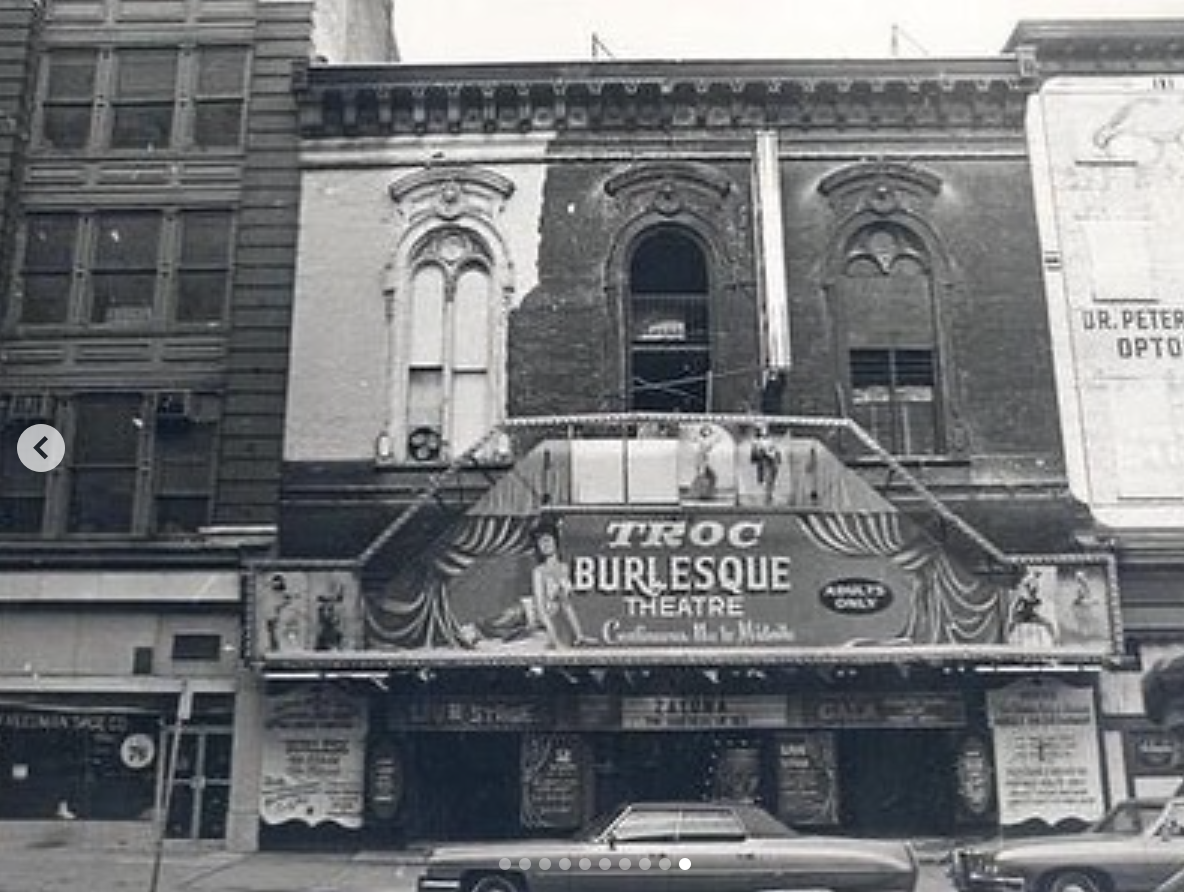
The Troc had been a dance hall for over 100 years. A place where folks gathered and were entertained.
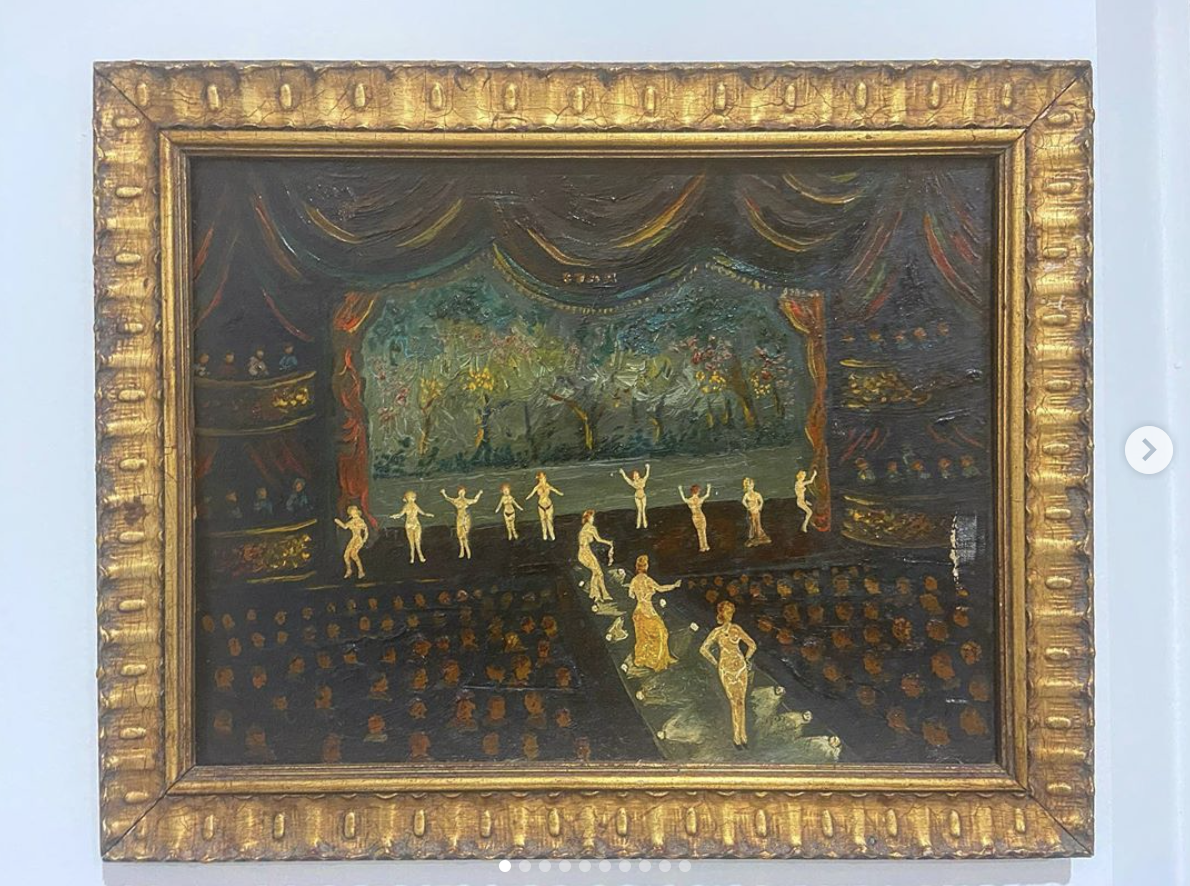
Just like the folks in the audience in this painting. This painting that I bought at the flea market in New York City. This painting that is signed illegibly and dated 1909, or maybe 1904.
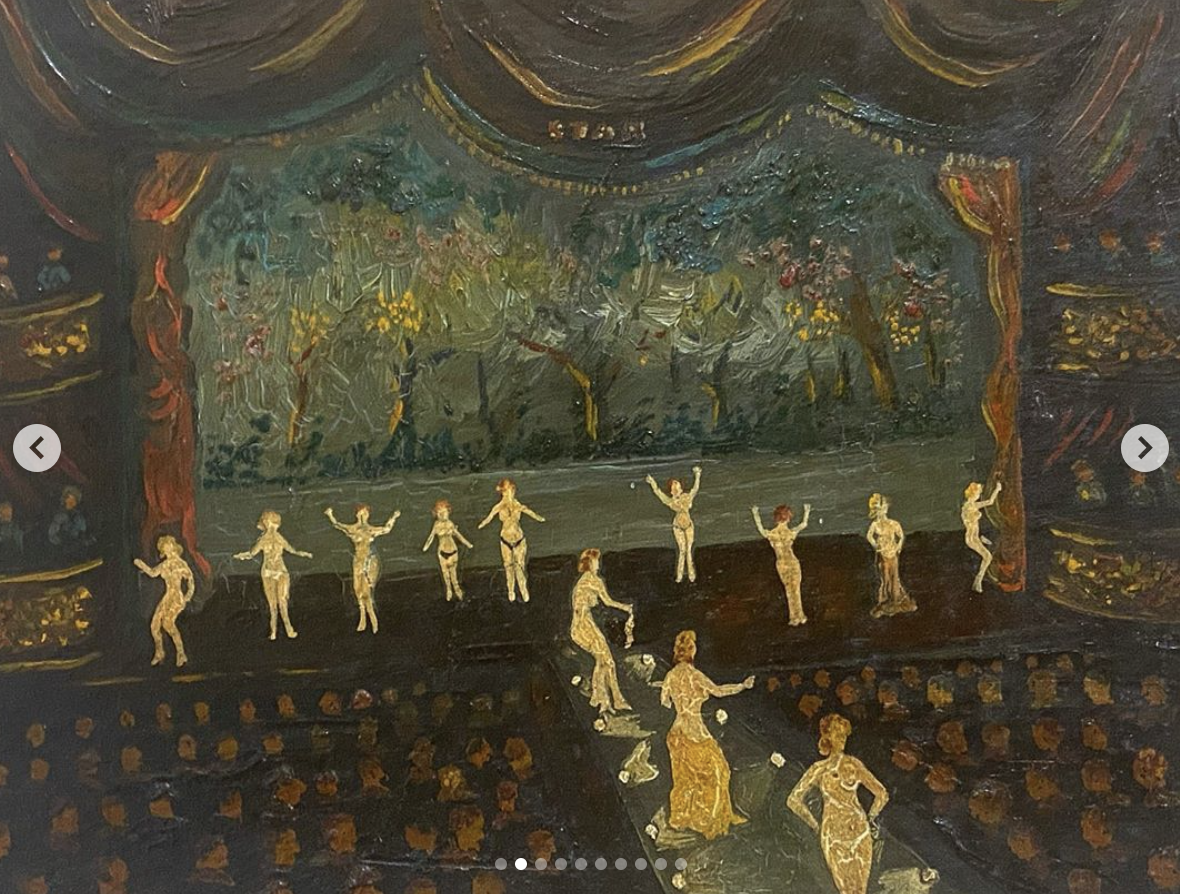
This painting that makes up part of the collection of art that I buy simply because I like it. This painting that I’m sharing with you. And so back to Burlesque. There was a Star theatre in New York.
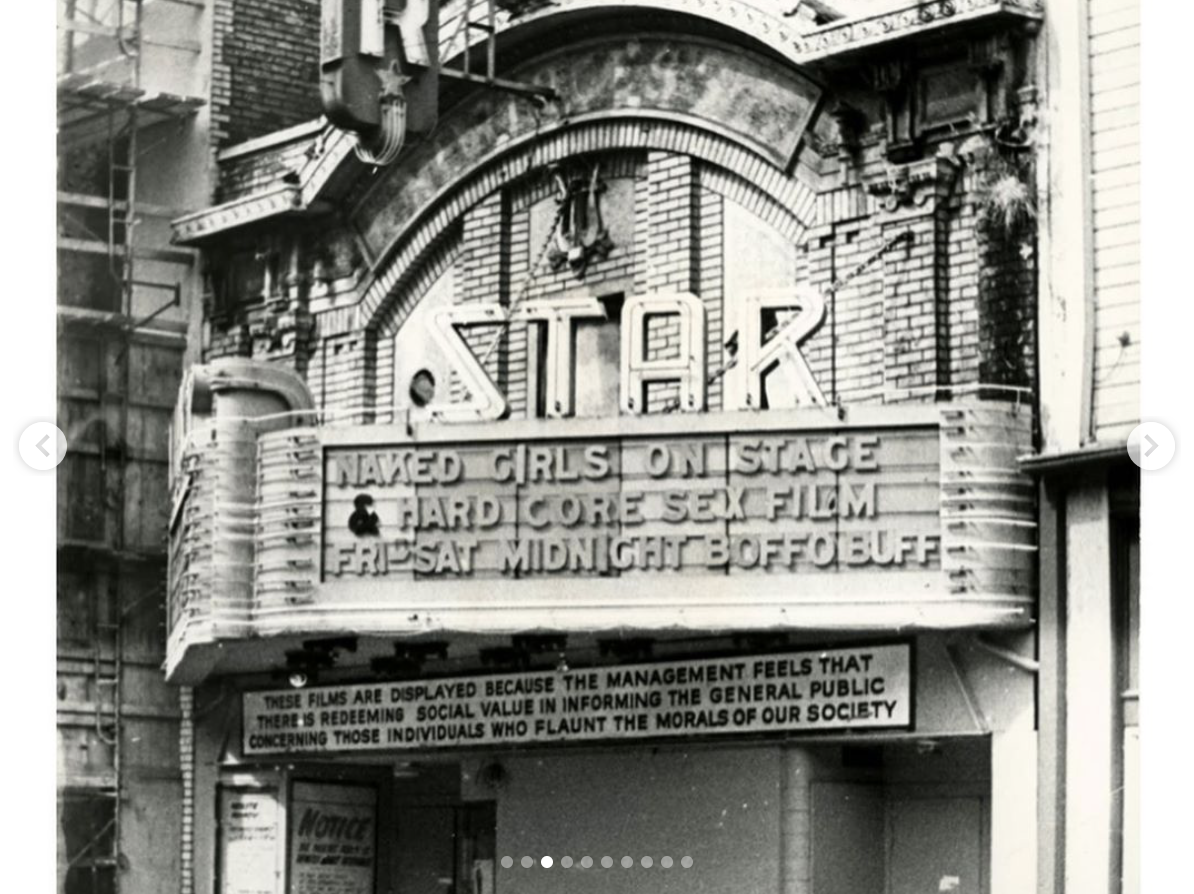
Maybe this painting is of that theatre. Or maybe it’s part of the imagination of the artist. Until I can decipher the signature or dig up more information on a variety of Star Theatres, I’ll be left to conjecture. So let’s imagine together the scene... it’s the early 20th Century and Butlesque in America had evolved from Victorian Burlesque, music hall and minstrel shows.
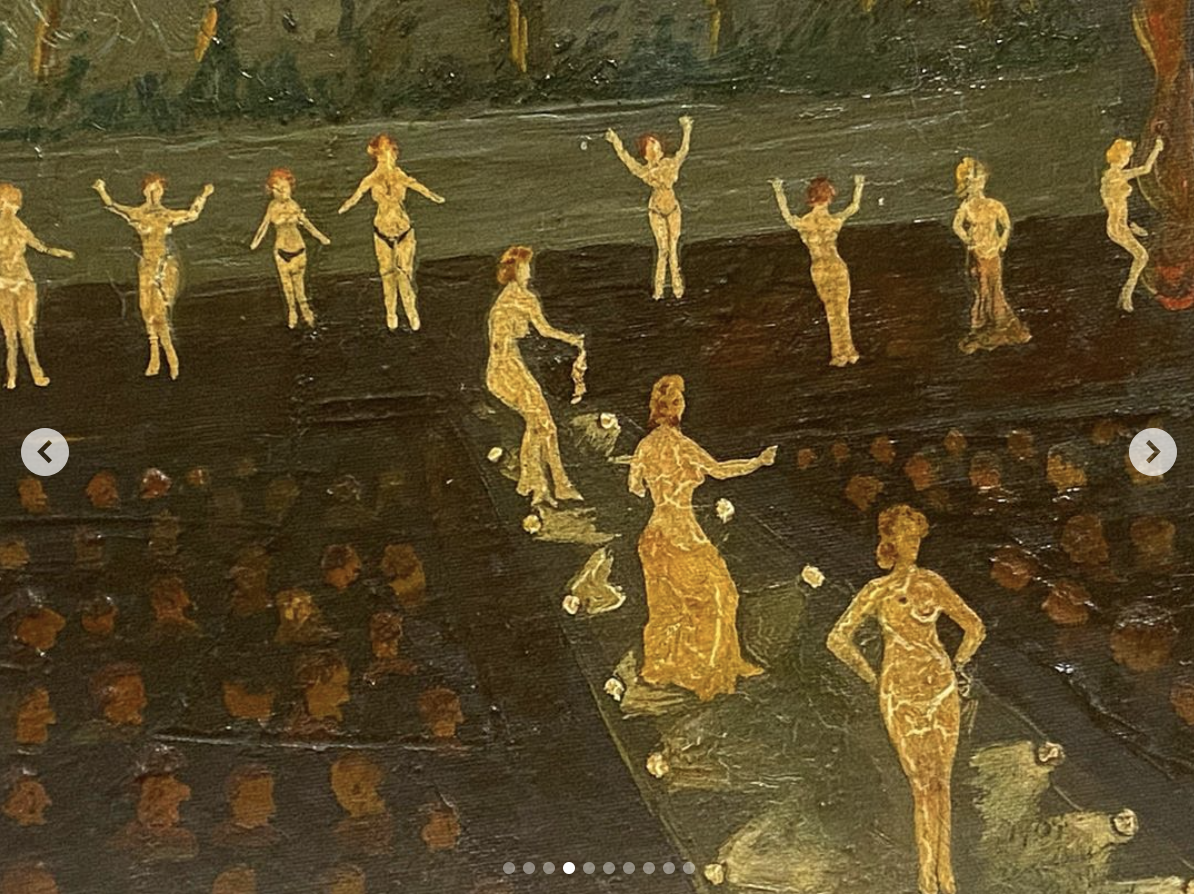
There was song and dance, comedy, vaudeville and, of course, women. Just like the performers in this painting. With barely there costumes and a choreographed routine, there was certainly not much left to the imagination. But imagination is all that I have right now. And so I’m sharing this painting with you hoping that it will spark something in your imagination. ;-) hkv
Why Toaster Waffles Are Okay

This morning prior to breakfast I sent out my regular email and I included pics of all sorts of things that I’m selling. Like this painting. I had resigned myself to the fact that I wouldn’t know the artist and I would just phone it in. I knew it was a great painting, but I didn’t know anything else about it. It seemed to me that I was just phoning in the whole ‘being an art dealer’ thing.
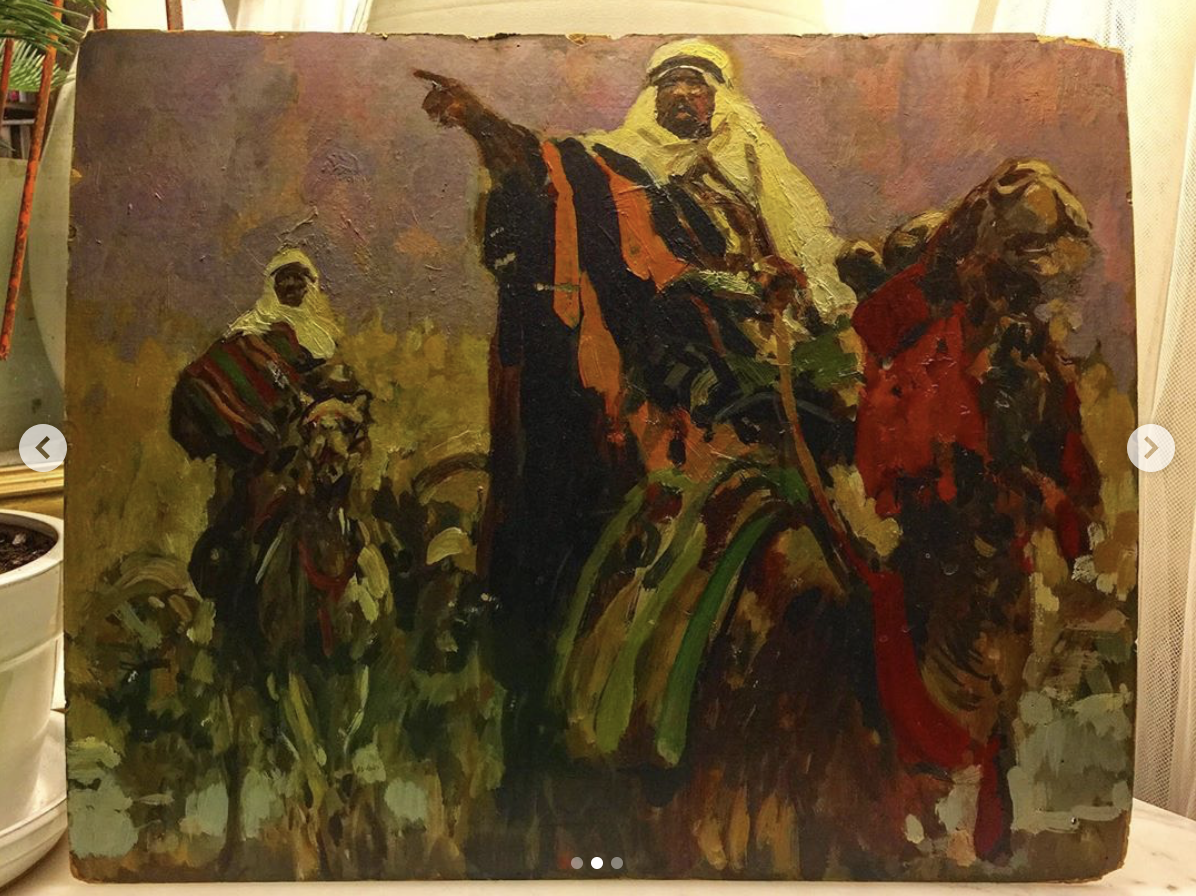
Then I saw a reply to my email from a Madison Avenue art dealer. He was inquiring about this painting and one other. While the kids were enjoying their waffles, I made some room on the table to measure the painting and respond to the gallery owner. As I turned the painting to measure it, the light hit it. Just right. And the signature appeared.

There in the top right corner. M. L. Bower. A well known American illustrator. Suddenly the painting looked a lot better with the signature. Like the waffles with the milk. ;-) hkv
Joachim Aviron: a Forgotten Modernist
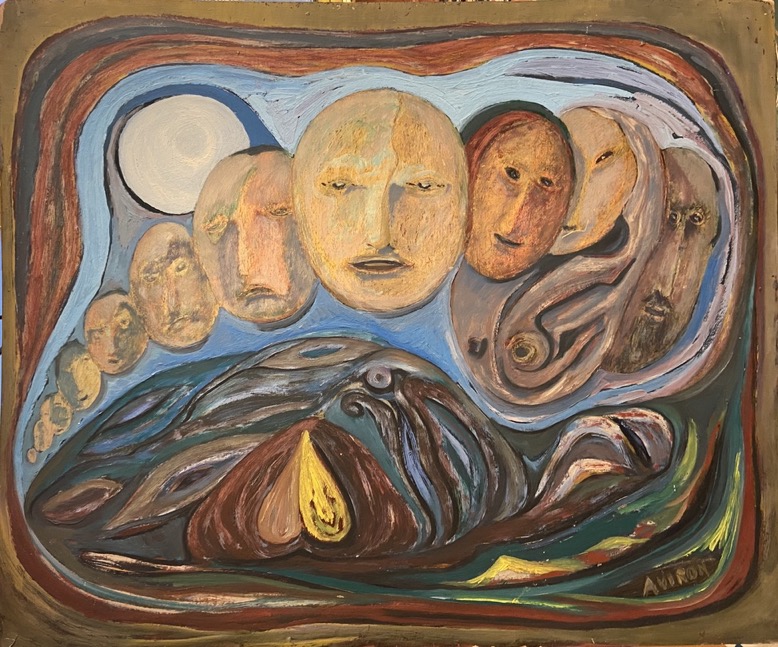
Mr. Aviron did not paint for an audience. Instead, Aviron painted for himself. Perhaps the truest form of expression. He painted because the desire to express himself as an artist overtook the need to present a work that would be what was expected of him. Mr. Aviron painted the unexpectedness of his reality. A reality that formed around him. One in which every detail was present, accounted for and celebrated. Mr. Aviron continued to paint, to write, to teach. With his wife by his side, the Aviron's continued together along Joachim's path of creativity. He continued to paint his reality, But by 1944, Mrs. Aviron reached out for help. Bertha began to notice changes in her husband. And so she acted in the best interests of Joachim. Bertha contacted the Curator of the Brooklyn Museum, Mr. John L. Barr. Bertha asked Curator Barr for suggestions on where to present the works of her husband. Mr. Barr directed her to contact Assistant Curator Dorothy Miller at the Museum of Modern Art. Upon receipt of her letter, Ms. Miller responded to Bertha's request for an audience for her husband.s paintings. Miller offered to view Joachim Aviron's work as soon as it was brought in to her office. This was Joachim's chance to place his work in front of an audience eager to see it. Ms. Miller had recently created her first of at least six curated art exhibits focusing on American artists. Joachim Aviron had become an American citizen years prior. He could technically be in the running for consideration of her next show. So why then did the Aviron's not take Miller up on her offer. I can't say. But Mrs. Aviron did not give up on her husband or on her connection at the MoMA. And that is why in 1945, Mrs. Aviron wrote a second letter to Ms. MIller. This letter lacked the matter-of-fact tone that the first letter had. This letter was desperate. This letter spoke of depression, loss of hope and a lack of desire to live. It was a truly moving cry for help in which Bertha painted a picture of being surrounded by paintings that were not being seen by an audience other than the artist and his wife. Imagine being surrounded by what you love, what you have created and feeling as though it is swallowing you up. Mocking you. Reminding you that no one has seen your work and still pushing you to create more.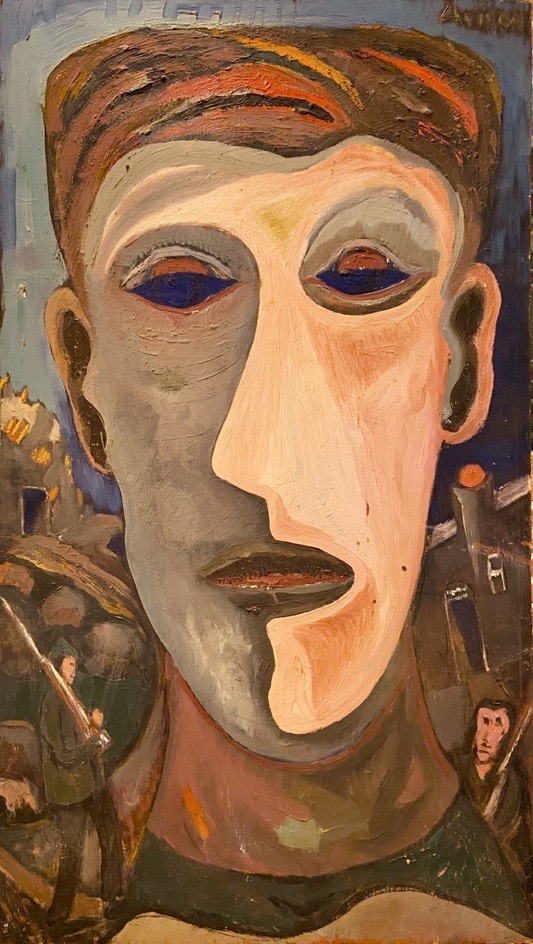
Had Aviron lost his will? Or was it a response to the current situation of World War II. Abstract Expressionism grew out of the visceral response to the war by a school of New York artists in the downtown scene. Aviron was living far out in Brooklyn, on the edges, the fringe, if you will. He was in Seagate and Coney Island. Perhaps being far removed from the activity of Manhattan, Aviron had created his own reality that threatened to consume him. Add on to that the response to a global war. A war that caused death and destruction. A war that had its own reality. Surely, an artist like Aviron would've had moments of despair. And perhaps his wife, while meaning well, could not understand this full body response. And I think that Curator Miller from the MoMA knew this. She resounded to Bertha's letter within a day. Miller did not focus on the hardships that Bertha perceived, but rather on what could be done. On galleries that should be contacted. On plans to make. On the hope to have in the reality that Aviron had created.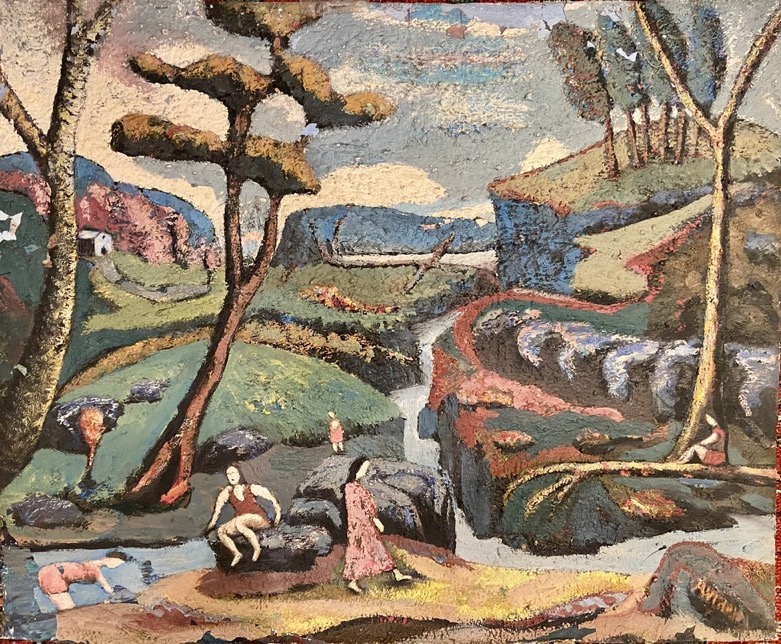
And so what had happened between 1945 and 1963? Did Joachim Aviron take Dorothy C. Miller's advice on what galleries to contact? According to a newspaper article from a local Brooklyn newspaper in 1963, the Aviron's had moved to Brighton Beach around 1956. Joachim's work had been exhibited in both the boroughs of Brooklyn and Manhattan, but records of those exhibitions are lost. He obviously continued to paint, to create and to live. He had not lost hope. He had not lost his will. He had not allowed his reality to consume. Rather, it appears that Joachim found a new desire to pursue his calling.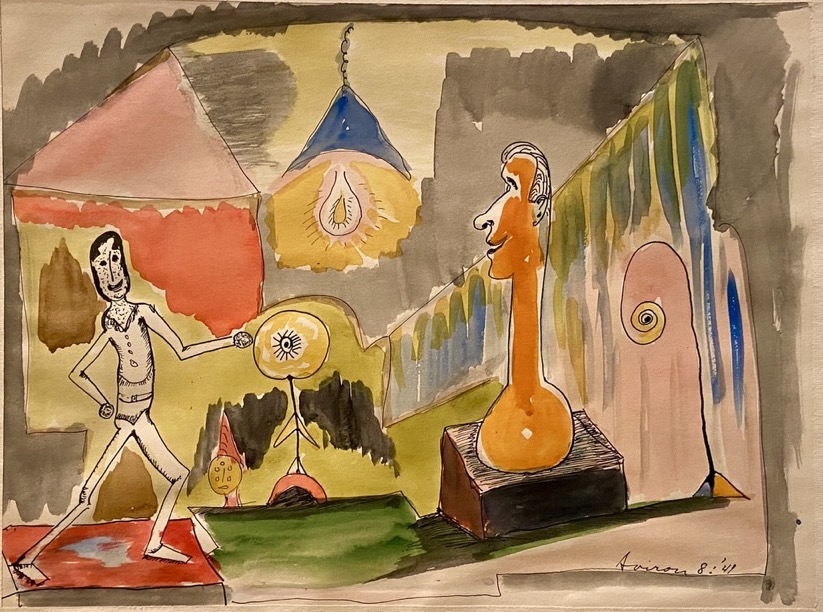
Make A Bold Staement with a Line
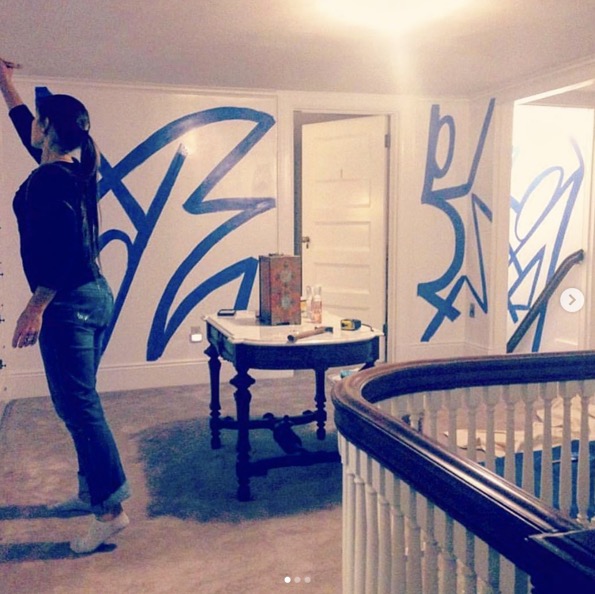
My friend had approached me and tasked me with creating art on the walls of her sprawling family home in Central Massachusetts. What? I had no experience in this. Wondering if she had simply sensed my feelings of struggle and wanted to challenge me to break free from the self imposed mindset or if she too had feelings of breaking free from something. I declined. This was no easy choice as I knew it would be liberating for us both, yet I lacked the confidence to believe it was possible. We spoke again a few days later. I had been thinking of her proposal every moment in between those conversations. 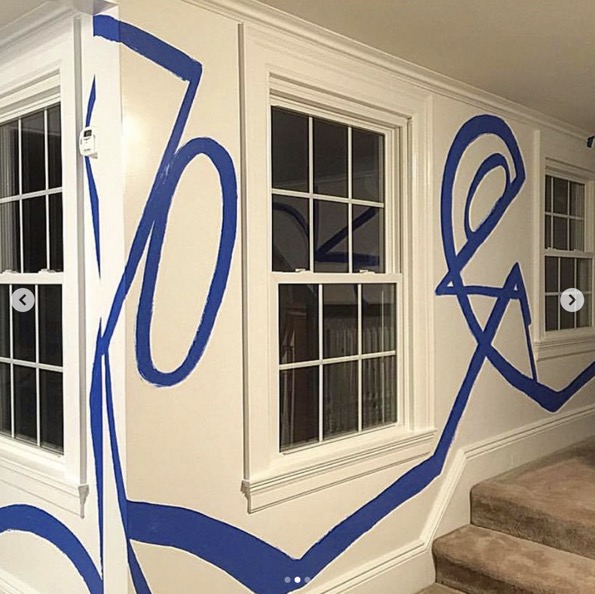
The bold choice was to say yes. The safe choice was to say no. And so I boldly went where others had gone before. But who was I to follow in their footsteps? I was a mere vendor, not an artist. Did I have something to say? Was I ready to share it? Would our friendship be intact? Quieting the questions, I simply said yes to them all. And so I dipped my brush into the paint, closed my eyes and visualized a language to communicate that feeling. Of freedom. Of power. Of belief. Of saying yes. I didn’t think about who would like it. Or not like it. I thought about what I wanted to say. For me. For you. For us all. 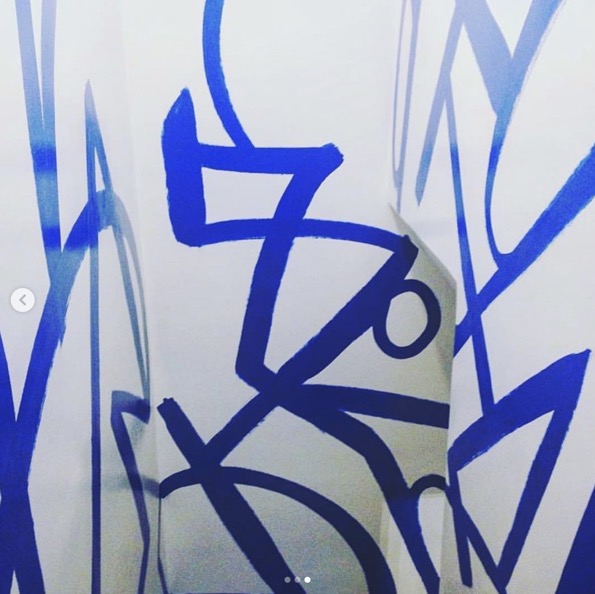
I wanted to create and communicate movement. Whether we go forward or back, up or down... we are moving. And it is in this movement that we must stay focused on our own journey. We cannot be free to move when we second guess every step and whether it is right or will be seen favorably. So keep going. Keep doing. Keep communicating. ;-) hkv
Buy Low, But Don't Be Cheap
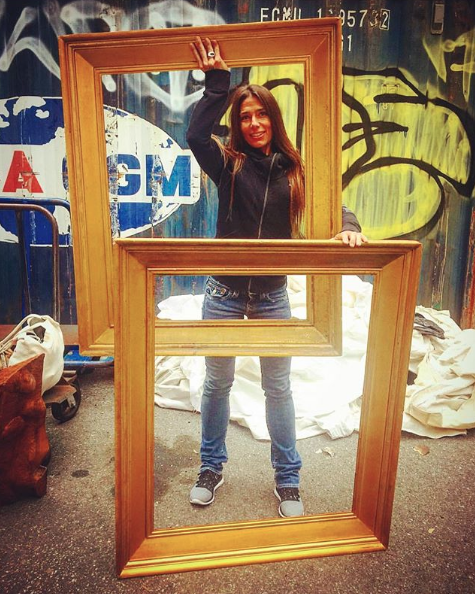
This pair of Sully frames is the perfect example. They weren’t empty when I bought them. They each housed a portrait. I mean they are portrait frames. So where are the portraits? I’m not sure because I left them at the flea market. You see sales of ‘instant ancestors’ are down. Really down. Maybe you read the Wall Street Journal article recently extolling the benefits of exploiting this low market. The author of the article, Kathryn O’Shea-Evans (who has now blocked me), even bragged that her husband beat the seller down an additional thirty percent on a pair of portraits that she loved, but that is a rant for another day. Back to the frames. Armed with a pair of pliers, I ripped out the cut nails that held the paintings in the frames and told the seller that I only wanted to buy the frames. Even though they are portrait frames and the market is down, remember I mentioned that. The vendor and I struck a deal and I went home with the pair. Of frames. When it came time to sell them, my clients told me that the market for portraits is down and they didn’t want to buy portrait frames. Oops. Had I outsmarted myself? No. Because I just hadn’t shown them to the right client. A couple pics sent by text with a price and he jumped at the pair. Back to the portraits. The seller was more than happy to have the pair because he had a client for them. Win - Win. So, yes. Take advantage of a low market but don’t take advantage of the seller. Be ready to hold something in a low market, but don’t give up hope because your client might only be a text away. ;-) hkv
Sink, Swim or Tread

So a few years ago I was in Philly and heard about an auction of antique picture frames at a local art gallery. Curious, I went to see if I could buy a couple lots. Turns out, that I bought more than a couple. I bought about 250. Freestyle. Back stroke. Doggy paddle. It was time to swim! Or in my case, tread water. And then I had to figure out just what to do with all those frames. Logistics were the easy part - rent a truck and load it. Then what? More treading water, that’s what. I got all the frames unloaded and into storage so all that was left was to sell them. 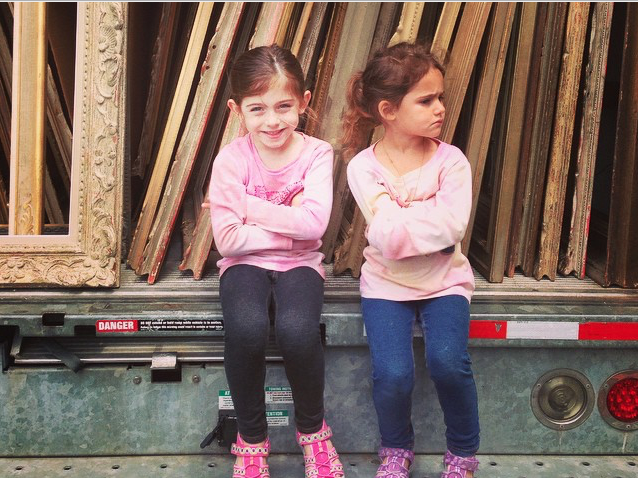
At this point I’m thinking back to an episode of Magnum P.I., you know the one where Magnum falls off his kayak and swims the opposite direction from it and has to tread water for eleven hours or so before Rick and T.C. rescue him? Yeah. I was feeling like Magnum at this point. Strong. Invincible. Water logged. Just without the mustache. I scrolled through my contacts to one dealer. A great friend who I knew could buy the whole lot. And just like that, I was once again loading the frames. But this time into his truck. So what’s the moral of the story? Jump in, baby, the water’s fine! :-) hkv
Traditional Values
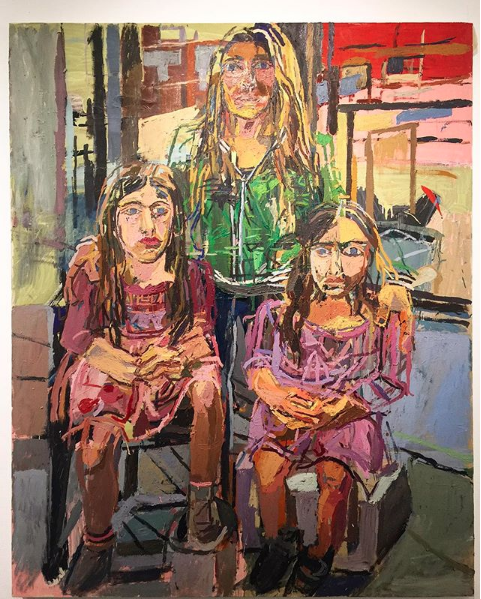
The family portrait is an historical document, a moment in time captured for future generations. Painted from life in his studio, my daughters and I were allowed entry into the world of an artist. The method, the mannerism, the mechanics, the movement - we were the observers and the observed. After many sittings, many hours and many movies on his computer, I'm completely honored and totally psyched to share our portrait with you. Some of my friends will recognize the green jungle print jacket that I wear to most 'fancy' engagements. Seemed only fitting that I wore it for our portrait. This portrait is currently on view at the Sweet Lorraine Gallery in Red Hook, Brooklyn in a show called INTO VIEW until the 31st. I hope you'll visit the show to see Clintel's work as well as the work of several other incredibly talented artists. After the 31st, you'll have to come over to our apartment to see the painting. ;-) hkv
I've Been Framed
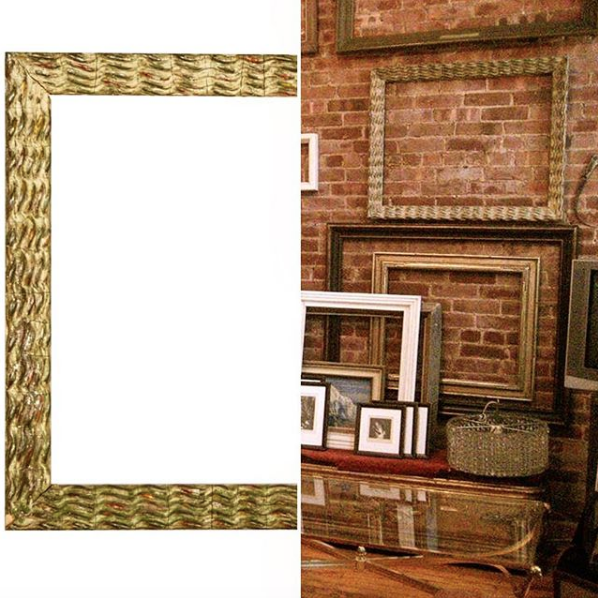
This is what the antiques and art business was like not too long ago. I'm not talking about some old forgotten time. I'm talking about ten or fifteen years ago. But let us not lament the past, let us enjoy it. Case in point, a picture frame that I enjoyed for many years. I purchased the Newcomb-Macklin produced frame with two other frames that day when I ran into the downtown armory and made a bee line for the booth of a fellow art and frame dealer. The two other frames were wide molding, hand carved and gold gilt examples perfect for important paintings. But this one. This was the emotional purchase. This skinny molding, polychrome finish over a rippled gesso profile was all emotion. I promptly sold the other two and hung this one on the wall of my old West Village apartment. And there it stayed for many years until one day in May. I thought it was time to let it go, so I brought it to the antiques show in Brimfield. And as I was hanging it in my tent, Steven Gambrel walked in and bought it. Just like that. I'm still wondering where this frame has wound up and I'm always expecting to see it in the pages of a shelter magazine or more likely here on Instagram. ;-) hkv
Diamonds in the Rough
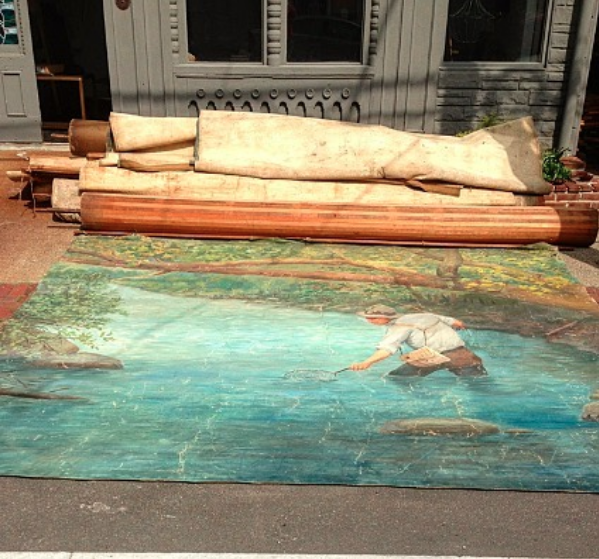
Such was the case about five years ago or so when I came across fourteen incredible hand painted murals on canvas dating to the 1930s to 1950s in a place where I was buying a whole other category. As soon as I set foot upon them, yes I mean set foot rather than set eyes, I was immediately ready to find something amazing. With the light of my cell phone I realized that each mural was rolled around a lath cylinder spanning over ten feet in width. The length of each #mural was a mystery at this time because the clock was ticking and I had to race to get all of my soon to be purchases out of the building. It wasn't until the next sunny day that I was able to unroll each of the murals across the sidewalk and into the street to see exactly what I had just purchased. In typical fashion, they were a mystery to me at the time of purchase. To this day, even though I sold them all to one person shortly after buying them, their provenance remains a mystery. Each of the murals depicts outdoor scenery with lions, fly fishing and hunting and dogs being the dominant scenes. The murals were all so well painted and in good shape considering the conditions they were in (let's just say less than ideal) that I was immediately invested in their research. But it didn't get far as the soon-to-be buyer spotted them in what was the window of my storefront in Philadelphia. We struck a deal and I rented another truck to deliver them. Today you can find these murals in Philly and New York City and Milan so keep an eye out for them. And always be ready to find something amazing! ;-) hkv
Don't Let Them Tame You
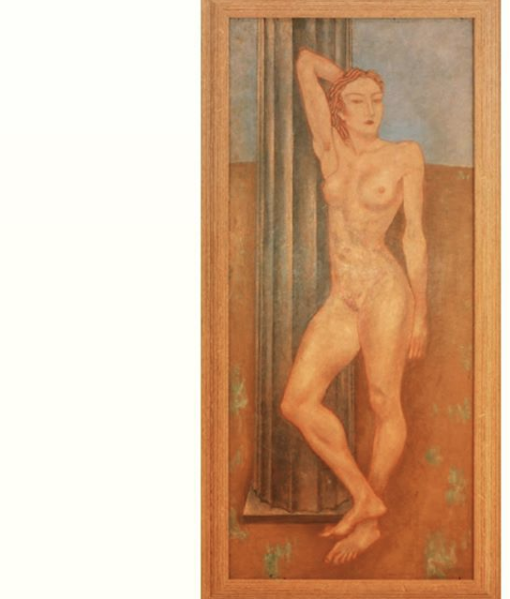
We would need to ask American artist Maxwell Simpson for he was the one who painted this posthumous portrait of the dancer. I bought this piece many years ago at a Pier Show in New York City from another dealer. The work caught my eye just as it was being unloaded from the dealer's truck. Believing that the early bird gets the worm I jumped on the chance to buy the portrait. Even before I knew the artist. Even before I knew the subject. Simply because it struck a chord. I was moved by the sense of confidence and vulnerability. A portrait is a personal story. Like a biography it is a life told through someone else's eyes. The artist portrayed Isadora Duncan leaning against a fluted column as perhaps a nod to her often classically Greek inspired robes, tunics and dresses that exposed her arms and legs during her performances, something that was considered taboo among many at the time. Her body is taught, yet relaxed. She was no stranger to nudity. Maxwell Simpson told her story through the painting. She told her story through her dance. But when this story reaches deep into the soul, a connection is made. These connections are the reason for the antiques and art business. Folks see the passion in both the subject and the medium. Folks want to be part of the history of a work. You were wild once don't let them tame you. So don't be afraid to be bold, to buy with your eye as you will benefit from the experience. Each piece that I buy is a new opportunity to learn. I was introduced to the work of Maxwell Simpson and to the history of Isadora Duncan. I was shown again how chances taken are always rewarded. Through knowledge gained. Through experiences shared. Through history learned and continued. ;-) hkv
Stay True to You
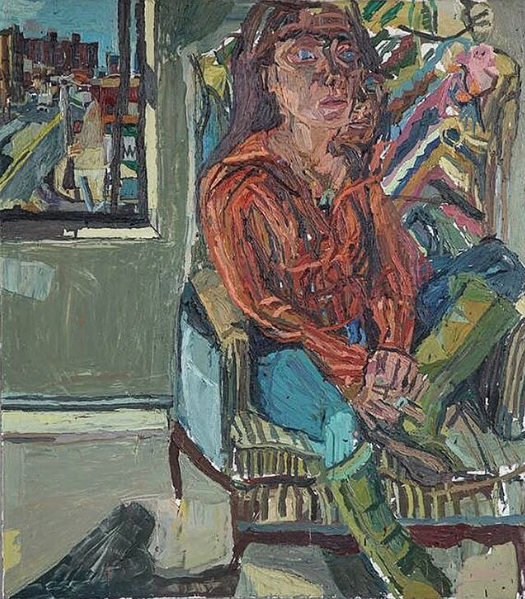
I first met Clintel in the NYC gallery of Mark Borghi as he was one of my first picture frame clients when I moved to New York in 2002. Clintel had asked me if I would sit for a portrait I immediately felt complimented and challenged at the same time. Who would I be? What would he see? I figured, this is an incredible opportunity to find out. So I headed to Brooklyn and over the course of a couple days in his artist studio this oil painting was created. I can remember exactly how I felt. There was a mix of emotions and I can see them all in this painting. And as art is something we each can interpret with our own eyes, we will each see something different. Today this portrait hangs in my apartment. It is a reminder to stay true to who I am. Clintel is still a great friend to me and my family. As the years have gone by, we have collaborated on the Modern Look Book event where his work was hand selected by Michel Boyd for his room in the inaugural Southern Style Now show house and by designer Kelli Ellis for her High Point Market showroom. Also, I held an exhibition for him in Philadelphia and we continue to brainstorm ways to connect his art with a wider audience. I often encourage folks to connect with a contemporary artist and support their work. Get out there and make a connection today so you can buy art and support the
arts I have recently added another painting by Clintel to my personal collection as well as commissioned him for a project. This is history in the making and it is an honor to be part of it. ;-) hkv
Martha, Martha, Martha
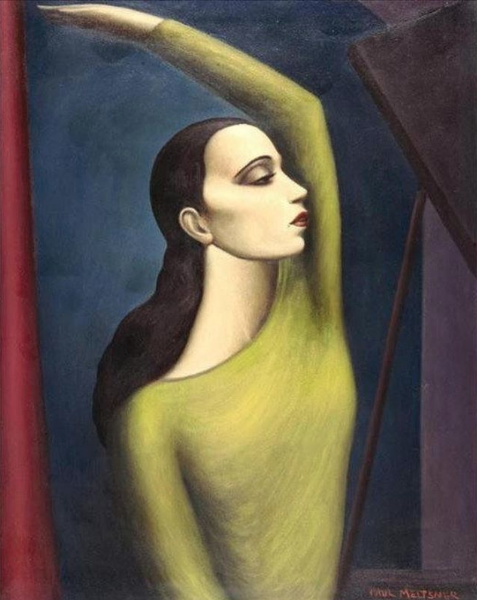
I can still picture it. A super wide, stepped molding with a gesso finish. This style remains to this day my all time favorite. Matter of fact I bought three of those profiles yesterday but that's another story. So when the dealer told me how much for the painting, I knew I could pop off the frame and sell it at a profit. So the painting would just be a little extra. Turned out to be a lot extra. This portrait of dancer Martha Graham was painted by American artist Paul Meltsner. Back then I didn't know Meltsner's work nor did I have a means to research anything before I bought it. It was strictly buy with your eye as my mantra. And so I sold the frame to one of my off Madison Avenue gallery clients and the painting was in my West Village apartment. Till one day when I thought I'd better look up the signature. Well you could say I was surprised. I immediately sent an email to Sothebys American paintings department and they put me in touch with the Arcade. How many of you remember Sotheby's Arcade? It was a great auction division for good paintings. And this was a good painting. Gotta say that the Arcade was my go to sales venue for this and more than a few other unintentional painting purchases. Nowadays that middle market has all but disappeared. But let us not lament the past. Simply enjoy the lessons it taught us. I learned a good one that day. ;-) hkv
Keeping Up The Pace

He had served his country for four years in World War II and then enrolled in art school. It was in the art school that he met Milton Avery. Years later in New York Pace would reconnect with Avery as well as study under Hans Hofmann and become friends with Willem de Kooning, Franz Kline and Jackson Pollock. You see, the 1950's in New York City was a hot bed for the burgeoning school of abstract expressionism. Mr. Pace was in the thick of it. He painted this incredible oil on canvas abstract painting in 1952. And I bought this painting some fifty five years later also in New York City. I was making the rounds to some of my favorite shopping places when I turned onto 11th Street in Greenwich Village. Walking up to the shop, the door was being propped open by something. That something turned out to be this painting. My eyes popped and and jaw dropped. I recognized the name, but I didn't buy it for that (yeah, the one time something I buy is actually signed). I bought it because it spoke to me. And isn't that why we buy art. Why we have to save art. Why we are art dealers. We are constantly seeing things in and out of context. Surely using a master work by a top abstract expressionist artist as a door stop does not present the proper context. But it is up to us to see in it the potential. And then to be the vehicle to carry the work forward. This painting is now in a private collection and I'm happy to have been part of its journey. ;-) hkv
Extra Information:
Have you ever heard that? Have you ever said that? Well, we won't be taking names, so don't worry. Maybe you've asked yourself, "what is abstract art?". Here's my take on it. It is emotional. It is strong. It is powerful. Abstract art is more than splashes of color, squiggly lines and paint splatters. It is spontaneity. It is the raw emotion of the artist presented for all who dare to look. It is the visual representation of a feeling, or mix of feelings. An artist strives to represent something without external likenesses. The thing is not represented in realistic terms, but in feelings. This is a mood. This is a movement. This is Abstract Expressionism and it has a lot to do with New York City in the mid 20th Century. The artists of this movement and time were creating spontaneous representations of emotions. These are strong works. These are the works of masters of the form. So where does a Missouri farm boy fit in to all this?
Stephen Pace was a small town boy who flipped a coin. Tails was San Francisco. Heads was New York City. That coin came up heads and Mr. Pace's life was about to change. He served our country in World War II for four years and was then entitled to four years' education. He chose an art school in Mexico. It was here that he met Milton Avery. After his schooling in Mexico, he was on his way home to the farm. Back to his roots where he had taken up drawing and painting those many years ago before he enlisted in the war. Back to his family. He paused. He reached in to his pocket while he stood in that bus depot in New Orleans and he flipped a coin. "I knew if I went back to the Midwest they'd put me to work on the farm...". That thought was all it took.
Arriving in New York City he was immediately thrown into the fast paced art scene. Studies under Hans Hofmann, friends with Willem DeKooning, Franz Kline, Jackson Pollack, mentoring under Milton Avery, trips to Europe. He made the most of his time. He was learning from the best and surrounded by the best. Stephen Pace thought back to those rural days and his figurative paintings, but he wanted to try his hand at something new. Perhaps those four years in the war had built up some emotions in Mr. Pace that needed an outlet? Perhaps he was delving deep to realize an as yet undefined goal? Perhaps he was an artist coming in to his own...
Mr. Pace's abstract works of the 1950's, during the pivotal Abstract Expressionism movement, are among his most provocative and thoughtful pieces. Explosions of color. Of feeling. Of movement. The canvas seems barely able to contain them. The brush strokes leap from the rectangle and push their ways to infinite space. They cannot be contained. They are bold and boisterous. They are real and rousing. They are abstract.
Abstract may be defined may ways by many people. Perhaps your pint sized Picasso has just created his latest fridge worthy work of art. Fantastic. Get the magnets and place it up there in between the to-do list and photo of Fido. Sure, by definition there are emotions in that art. There are bold uses of color. So, maybe your kid could paint that. But this is where we have to step back and take another look at abstract art. Rather than just saying, "Oh, I don't understand that." Take a moment and let yourself be drawn in to the piece. Look for the movement. Where does it lead your eyes? Do you gravitate back to a certain color? Are you looking beyond the canvas? These are questions that really only the viewer can answer for the viewer. Generally an artists work is seen in an exhibition or in some context of presenting an overall understanding of a period of time in an artists life. Viewing one abstract painting and summing up your ideas of abstract art, is like looking at one car and thinking you understand the entire industry. There are lots of artists out there who have lots to say.
Hear their voices in their art. Abstract art is for everyone!
Do You Think This Will Fit in My Carry On
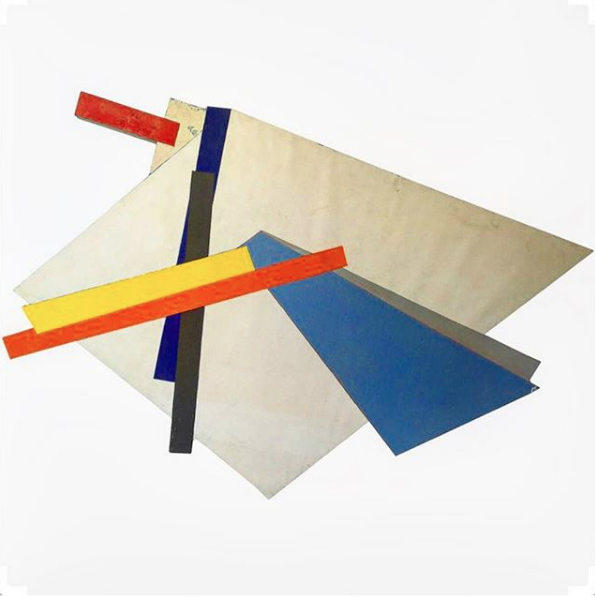
And then other times you pick up a monumental hard edge painting by abstract artist Dennis Ashbaugh and then you ask yourself if a seven foot painting will fit in your carry on luggage. So that's what happened a few years ago. I was hanging out in the Wynwood Arts District near Miami Beach when I came across this massive shaped canvas from 1976 I knew I had to buy it. My kids knew I had to buy it. The shop owners were curious how I'd get it back to South Beach. So I did what any antique dealer would do. I asked to borrow their pick up truck. And I drove it to a storage unit and then organized with my shipper to pick it up. And I couldn't be happier with my souvenir from our Miami Beach vacation. ;-) hkv
A Sergeant or a Sargent
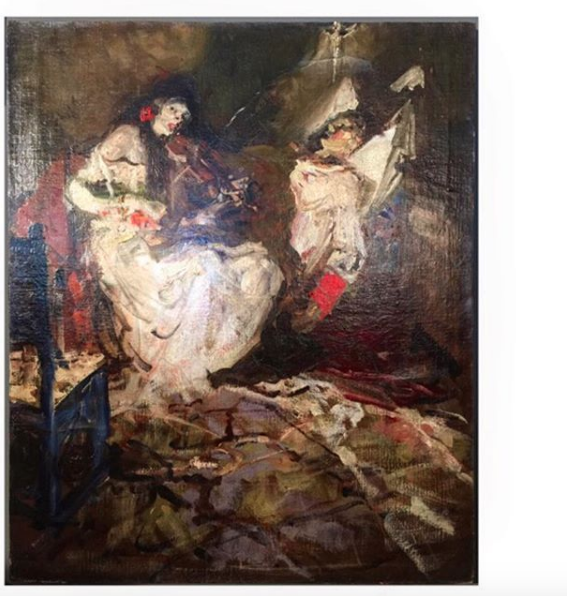
I bought this oil painting back in 2009 from a friend and fellow antique dealer. There's an old joke that goes like this, "There are two antiques dealers on a deserted island. Business is great." Ha! That couldn't be more true. We are a bunch of merchants, historians and peddlers who thrive on the hunt and the deal. We search out the rare. The sublime. The unique. And we get each other. It's the story behind the piece. It's the research on the piece. It's being part of the history of something as it passes from one hand to the next. From one generation to the next. We are simply the vehicle to carry it forward. This antique painting from the 19th Century has always had a great appeal to me. I love a mystery. Who is she? Why is she playing the violin for someone. Who is this man? Is he a soldier who is dying? What is their story? Their connection? And why, oh why, didn't the artist sign the painting!?!?! I will soon see what develops from the x-ray photography and I'm hoping that it will reveal some of the secrets and the answers. In the meantime, if you ask me, it has a John Singer Sargent vibe to it. ;-) hkv
Extra Information:
Have I mentioned that I am quite good at buying unsigned paintings? Yes? Oh, wonderful then you know already. For those of you who are new to my blog, here's a little backstory: I am always buying things that I know very little about. There. I said it. It's part challenge and part gamble. It's what makes the antiques business fun. Reaching out and trying your hand at something new. This painting is no different. Actually, it is different. Very different...
So, I had just given birth to our second child a week earlier. A dealer friend of mine had called to see how we were all doing (awesome, thank you) and also wanted to show me a few things. Maybe the paintings were first on his mind, but I like to think it was the other way around. So, he makes the drive over to our apartment and I met him in the lobby. The first two paintings were not for me (though I bought them against my better judgement and lost money, but that is a WHOLE other story - P.S. always go with your gut rather than a signature...) and then he showed me the third painting. Wow. Strong. Emotional. It wasn't my hormones, it was the painting. It had been re-lined at some time, maybe 70 years ago or so and was an oil on canvas dating to the late 1800's, I thought. Looked like an American canvas and stretcher. And now to the interesting part. The painting. A woman in a white dress playing the violin sits on the edge of a bed. A man (who looks like some military type) is lying in the bed propped up on pillows dressed in a white shirt with red around the cuff. The room is bare. A brown dresser and blue chair are the only furniture. There is a crucifix above the bed. Trust me, it is an emotional piece. Asking my friend about the piece yielded nothing. An, "Oh, I'm not sure. Could be something good. Maybe an illustrator. Definitely American, Sargent? I had a couple other names in mind..." You know the story. So, we reached a price and I brought the paintings back up to our apartment. The whole deal lasted about ten minutes. Just long enough for the new baby to fall asleep. And yes, the door closing did wake her up...
So after some time with the family, I began on my search for an artist. I tried illustrators. I tried American painters. I tried violin players. I got no answers. Days turned into weeks and those turned into months. Zilch. We were planning a trip to Brazil, so I packed up the paintings and put them into storage. And there it sat. About six months later, I was reunited with the paintings and I was happy to be hanging them in our new apartment. When the time came to unpack this one, I was seeing it with fresh eyes. Sitting down at the computer I typed in four words: woman violin soldier painting. Bingo. Sort of. Turns out there's a Civil War ghost story about a woman who plays the violin for a dying soldier. It's a North South romance. Very touching. I felt that I had made a huge breakthrough. Could this painting symbolize the story? Tell me what you think...
The story goes, during the Civil War the Martha Washington College for ladies was turned into a hospital of sorts to care for wounded soldiers. The college was located very much in the South, but took on patients from either side. A few of the students enrolled in the college stayed on as nurses and nurses aides. One day a seriously wounded officer from the North was brought in. He was brought in and cared for by the doctors and nurses. One of the students who was assigned to his care, began to fall in love with him. She was a wonderful violin player, not much of a nurse. When the wounded officer would need some comfort, he would ask her to play violin for him. Legend has it, that he called out to her to play something. She obliged and he peacefully passed away. She would die a short time later, some say of a broken heart.
The Martha Washington College is now the Martha Washington Inn. Some say that to this day, the sounds of a violin can still be heard coming from the room where the Northern soldier and Southern student had fallen in love. And the painting remains a bit of a mystery, but one that is at least a bit closer to an understanding. Now, if I could just figure out the artist...
It's All About Context

At first sight I knew I had to have it. But getting it home is always another matter. I never let a six foot square, four inch thick issue like that stop me though... I hoisted it up on top of my Ford Expedition, tied it down with some twine and kept my fingers crossed as I kept a firm grip on it with my left hand and drove home. As per usual, the work was unsigned. But you already know that I love a mystery. Plus it's another opportunity to learn about a genre new to me. Such was the case. I googled a few keywords and the first works that appeared were by none other than Frank Stella. You could say that I was pretty psyched with those results. More research and a few phone calls, emails and museum visits revealed this to be the work of American artist Sidney Guberman. Turns out Mr. Stella and Mr. Guberman were roommates at Princeton during their undergrad. Stella even did a print that he titled after Mr. Guberman. Learning all of this, I figured why not reach out and see if I could speak with him. Mr. Guberman was still showing work and living in Atlanta. He was thrilled to learn that I bought his work and that it would grace the design of Patrick Hamilton in his Derby Deconstructed room at the New York City Holiday House Design Shows in 2014. You see there's more context. From a warehouse garage in Philly to the Academy Mansion in New York City. From leaning up against old shutters to being part of a gorgeously designed interior. And where is the painting now you ask? Well it's now in an Upper East Side art gallery just off Madison Avenue. That, my friends, is context. ;-) hkv